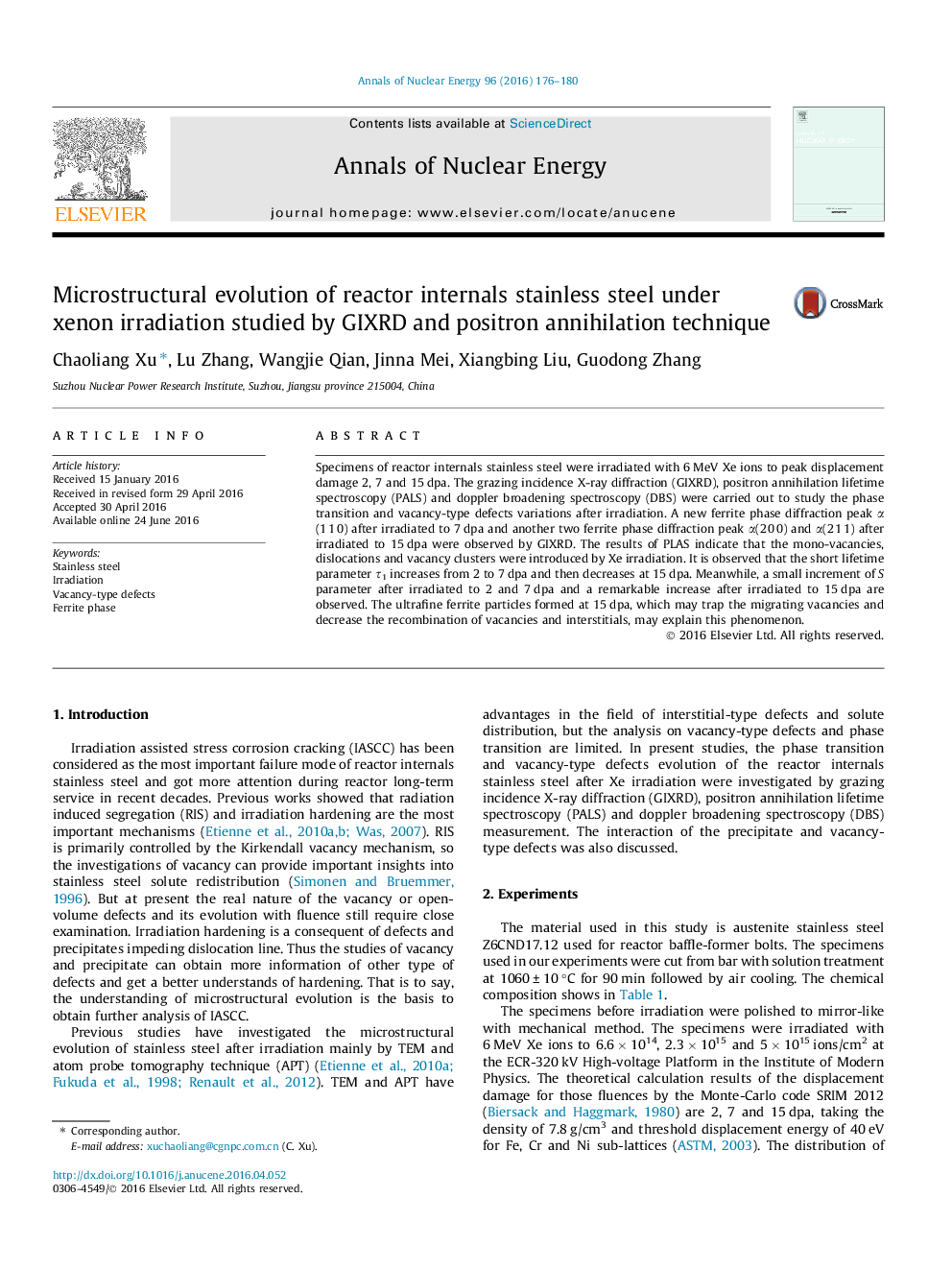| Article ID | Journal | Published Year | Pages | File Type |
|---|---|---|---|---|
| 8067510 | Annals of Nuclear Energy | 2016 | 5 Pages |
Abstract
Specimens of reactor internals stainless steel were irradiated with 6 MeV Xe ions to peak displacement damage 2, 7 and 15 dpa. The grazing incidence X-ray diffraction (GIXRD), positron annihilation lifetime spectroscopy (PALS) and doppler broadening spectroscopy (DBS) were carried out to study the phase transition and vacancy-type defects variations after irradiation. A new ferrite phase diffraction peak α(1 1 0) after irradiated to 7 dpa and another two ferrite phase diffraction peak α(2 0 0) and α(2 1 1) after irradiated to 15 dpa were observed by GIXRD. The results of PLAS indicate that the mono-vacancies, dislocations and vacancy clusters were introduced by Xe irradiation. It is observed that the short lifetime parameter Ï1 increases from 2 to 7 dpa and then decreases at 15 dpa. Meanwhile, a small increment of S parameter after irradiated to 2 and 7 dpa and a remarkable increase after irradiated to 15 dpa are observed. The ultrafine ferrite particles formed at 15 dpa, which may trap the migrating vacancies and decrease the recombination of vacancies and interstitials, may explain this phenomenon.
Related Topics
Physical Sciences and Engineering
Energy
Energy Engineering and Power Technology
Authors
Chaoliang Xu, Lu Zhang, Wangjie Qian, Jinna Mei, Xiangbing Liu, Guodong Zhang,
